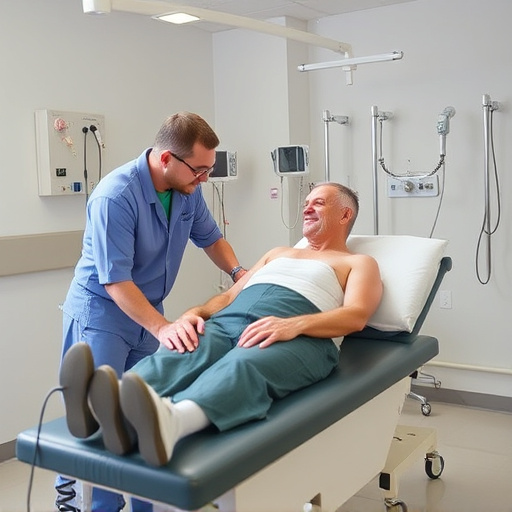Setting clear, specific goals with quantitative measurement is vital for ergonomic injury treatment. Consistent tracking methods using standardized tools ensure precise documentation and communication among healthcare professionals. Regular reassessments and adjustments to treatment plans, based on individual responses, optimize rehabilitation strategies for successful recovery.
Tracking progress is vital during ergonomic injury treatment to ensure successful recovery. This article guides you through defining measurable goals, implementing consistent tracking methods, and regularly reviewing and adjusting your treatment plan based on progress. By adhering to these steps, you can effectively monitor and optimize the ergonomic injury treatment process, leading to faster and more sustainable results. Learn how to transform data into actionable insights for a tailored recovery roadmap.
- Define Measurable Goals for Ergo Injury Recovery
- Implement Consistent Tracking Methods Across Treatment
- Regularly Review and Adjust Treatment Plan Based on Progress
Define Measurable Goals for Ergo Injury Recovery

Setting measurable goals is a crucial step in tracking progress during ergonomic injury treatment. These goals should be specific, achievable, and tailored to address the root causes of the injury. For instance, if an individual is recovering from neck pain due to repetitive strain, a goal could be to reduce neck pain intensity by 50% within the next month, or to regain full range of motion in the neck after a series of targeted exercises. Measuring these goals quantitatively allows for clear assessment and adjustment of treatment plans.
Defining measurable goals also facilitates the integration of various treatments like post accident rehabilitation and shockwave therapy. For example, alongside physical therapies, patients might receive shockwave therapy to promote healing. A measurable goal could be to achieve neck pain relief that lasts for 24 hours after a session of shockwave treatment, with the overall aim of minimizing reliance on pain medication. Regular reassessments against these goals provide valuable insights into recovery progress and help in making informed decisions regarding ergonomic injury treatment strategies.
Implement Consistent Tracking Methods Across Treatment

Implementing consistent tracking methods is paramount during ergonomic injury treatment to accurately gauge progress and make informed adjustments. Standardized measurement tools and metrics ensure every patient’s recovery journey is meticulously documented, facilitating clear communication between healthcare professionals involved in the post-accident rehabilitation process. This uniformity allows for a comprehensive view of the individual’s condition, enabling precise evaluations and tailored interventions.
By adopting uniform tracking practices, healthcare providers can better assess the effectiveness of various therapeutic techniques, including exercises focused on muscle recovery after ergonomic injuries or sports injury treatment. Regularly documenting changes in pain levels, range of motion, strength, and functional abilities provides a clear picture of the patient’s progress, helping to optimize the overall rehabilitation strategy.
Regularly Review and Adjust Treatment Plan Based on Progress

Regularly reviewing and adjusting your ergonomic injury treatment plan is a critical component of successful recovery. As you progress through your rehabilitation journey, it’s essential to reassess your goals and strategies. Your initial treatment plan may need modifications based on your unique response to therapy. For instance, if you’re experiencing lower back pain, physical therapy techniques might be refined over time to cater to your evolving needs.
This dynamic approach ensures that the ergonomic injury treatment remains effective and aligned with your recovery trajectory. Regular check-ins with your healthcare provider allow for a comprehensive evaluation of your progress, enabling them to make informed adjustments to your treatment plan. This iterative process fosters a more personalized and efficient path toward full recovery.
Effectively tracking progress during ergonomic injury treatment is key to ensuring a successful recovery. By setting measurable goals, employing consistent tracking methods, and regularly reviewing and adjusting the treatment plan based on progress, individuals can navigate their journey towards full healing. This data-driven approach enables informed decisions, ultimately expediting the process of regaining functionality and returning to optimal performance in the workplace or daily life.














